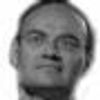On a world map the coordinates of Shanghai are unequivocal, latitude 31°12'N, longitude 121°30', but as a human representation the megacity lies between the rational and precise studies of the experts, geographers, economists or sociologists, and the infinite power of evocation of its name.
Cinematic more than photographic, Shanghai is difficult to capture, it flows like the matryoshka of streams which crisscross its flat land, the gigantic Yangtze, the Huangpu River, the Suzhou Creek and their affluents.
The Bund, a waterfront which displays an eclectic architecture, is often presented as the symbol of the Chinese metropolis while it is only one of its most picturesque faces, one penetrates better Shanghai's soul via fluvial navigations wandering somewhere between the land and the sea.
Like suggested by its two Chinese characters meaning "above the sea," Shanghai has left the shore but not yet entered the Pacific, in a sense, it can be seen as an intermediate between Beijing and Hong Kong: Beijing, once a Forbidden City, immobile on the continent, Hong Kong, a green vessel ready for sailing, Shanghai, a passage between the firm ground and the amorphous immensity of the ocean.
In an effective rendering of the megacity's rhythms and colors, This Is Shanghai, a time-lapse video realized by Rob Whitworth and JT Singh, reveals the pulse which beats from the waterways to the traditional alleys, the longtang, it visualizes Aldous Huxley's famous comment: "Shanghai ... Bergson's élan vital in the raw ... It is life itself."
Passage between the objective reality and the imagination, between the solid and the liquid, Shanghai stages an extraordinary circulation of people, goods and capital.
With 6 million inhabitants at the beginning of the '50s, 16 million in 2000, 25 million today, 30 million by 2020, it does not take long for the map of a city in construction to become obsolete.
The urban extension is horizontal as much as vertical, the steel pagoda, the Jin Mao Tower (420 meters), and the Shanghai World Financial Center (close to 500 meters) are already familiar landmarks of Lujiazui, Pudong's new financial district, but after its completion in 2014 the Shanghai Tower and its 632 meters will dominate a forest of more than 4 000 skyscrapers -- twice the number of New York City.
The dream of material success which inspired the merchants of London or the capitalists of New York City pervades the delta of the Yangtze, and the vast majority of the city's 173 000 foreign citizens -- a quarter of China's expatriates -- identifies their new home with a Chinese Eldorado. Last year, with a GDP of $323 billion -- it was around $ 130 billion 6 years ago -- Shanghai would have been the 34th economy in the world.
While the myth of the "Old Shanghai" is more a narrative cultivated by a few foreigners than a living point of reference for the Shanghaiers, futurism can not be the collective project of a city fully immersed in its present, neither profoundly nostalgic nor excessively preoccupied by the future, Shanghai has an instinctive passion for the newness and the promise of each day.
Not seriously concerned by the choice between Puxi and Pudong, the West and the East, the old and the new, Shanghai moves like a continuous flow of life, and one can easily imagine how the vigor of its pulse could have changed the fate of Thomas Mann's fictional character Gustav von Aschenbach, Death in Venice metamorphosed into life in Shanghai.
David Gosset is director of the Academia Sinica Europaea at China Europe International Business School (CEIBS), Shanghai, Beijing & Accra, and founder of the Euro-China Forum.
